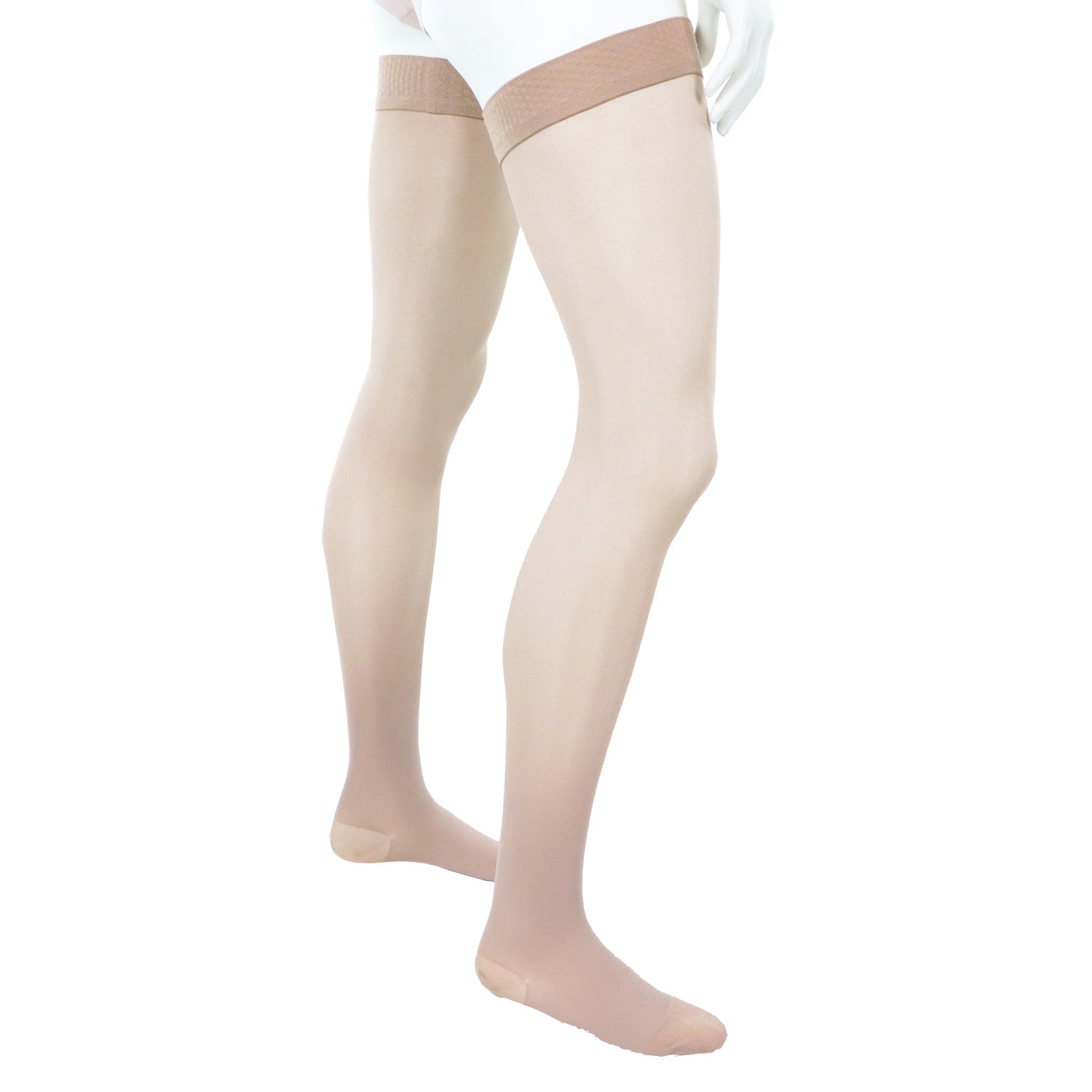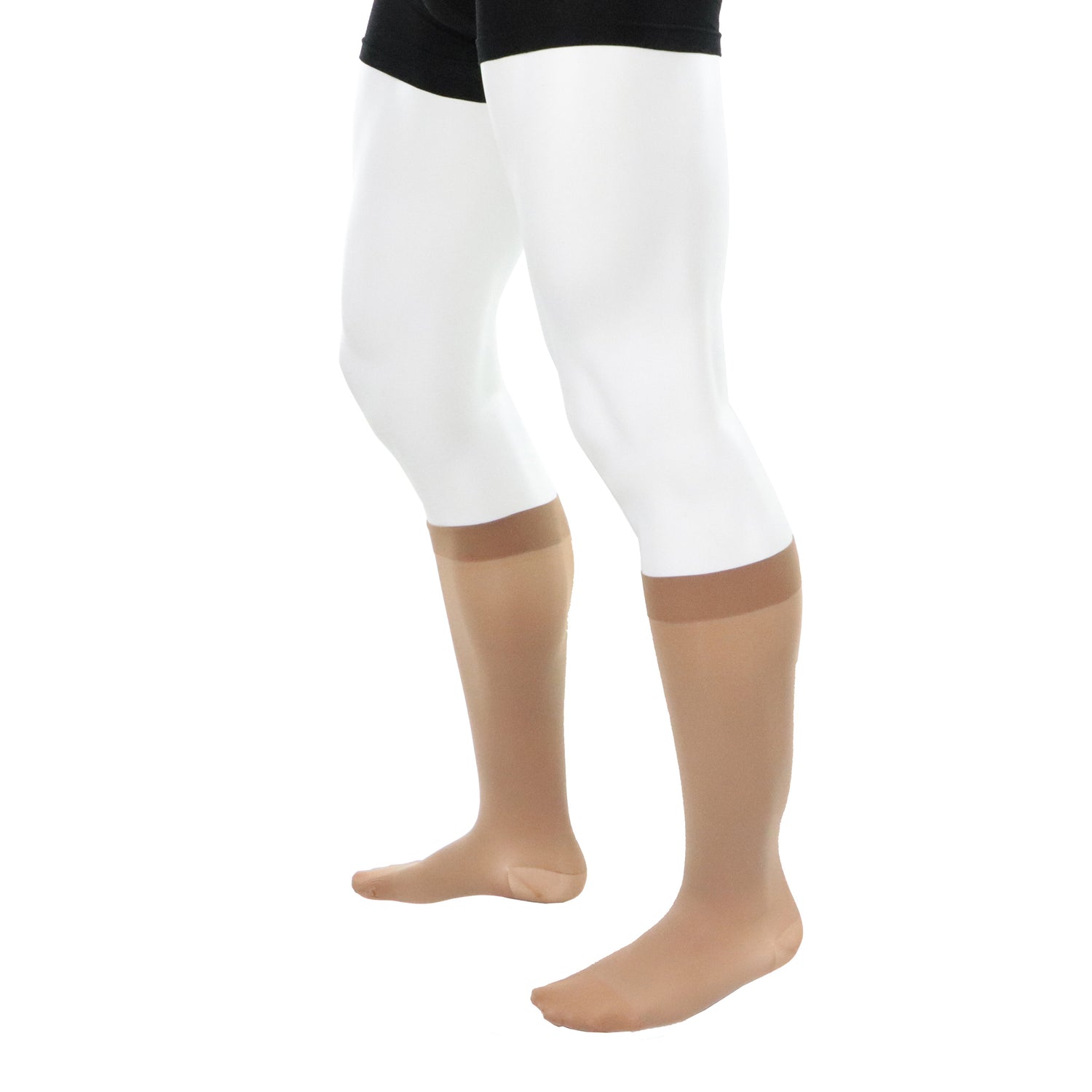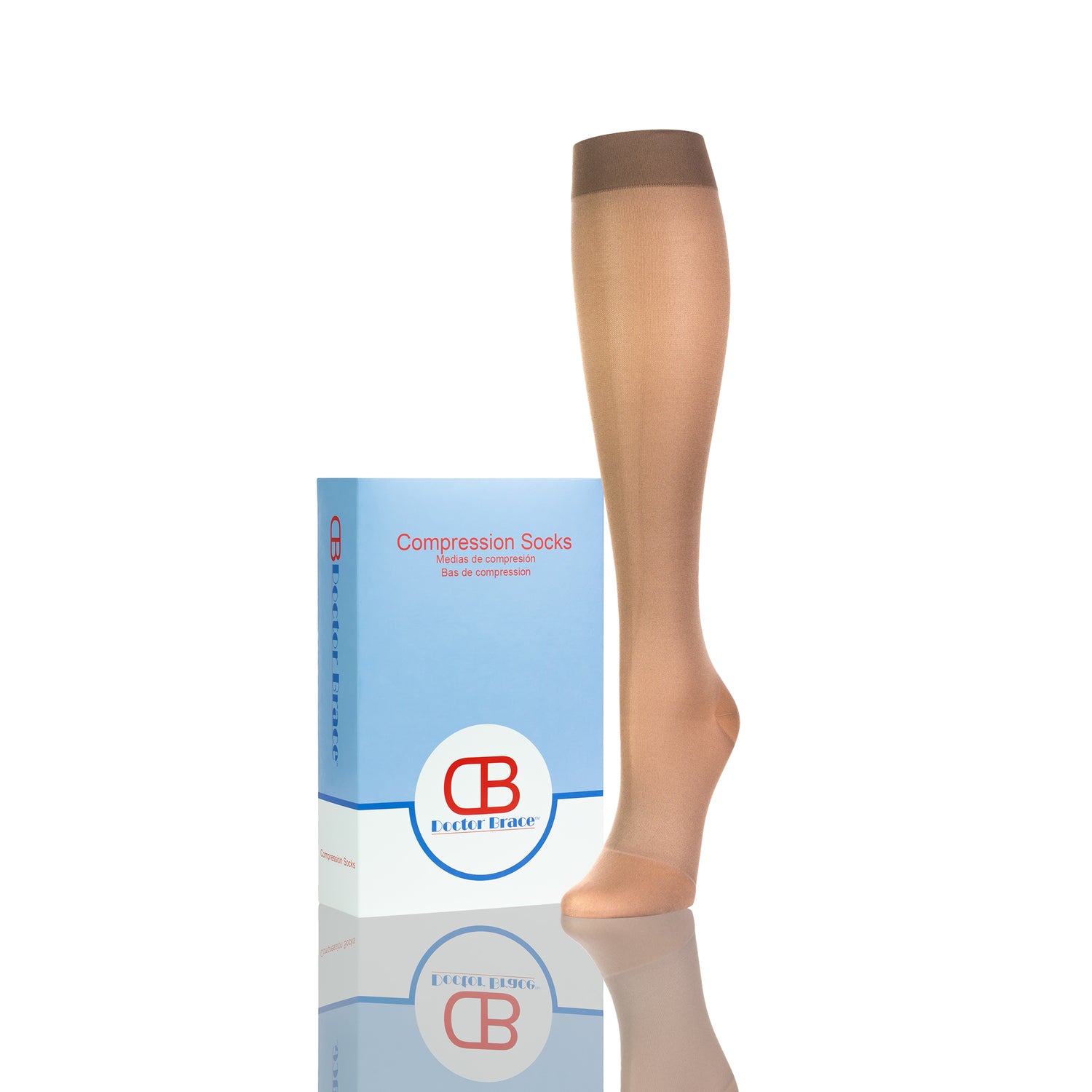Overview
Varicose veins are blue superficial veins deformed by venous insufficiency. In these veins, a certain amount of stagnant blood has accumulated.
A dysfunction of superficial veins in the legs or another body part can cause this venous disease.
A varicose vein on the legs can be painful. Other symptoms, such as heavy, numb, or swollen legs, may also be felt.
In this text, we describe what a varicose vein is. We also discuss its causes, available treatments, and the most common types.
The last section answers the most asked questions about varicose veins.
Description
What is a varicose vein?
What is commonly called a varicose vein is a vein like any other. The defective vein valve or the fragile venous wall is the only difference with a healthy vein.

Indeed, due to poor blood circulation or due to a less elastic and fragile vein wall, these superficial veins on the surface of the skin become:
- Twisted
- Dilated
- And, more or less visible
This is why a vein in a state of varicose veins then appears bluish, even sometimes purplish. This color is caused by pooled blood in twisted superficial veins.
Varicose veins in the legs are the most well-known type of varicose veins.
But, this venous disorder can also appear in:
- Vulva: vulvar varicosities or vulvar varicose veins
- Testicles: varicose vein on testicle or varicoceles
- Face: facial varicose veins
- Uterus: pelvic varicose veins or pelvic congestion syndrome
- Esophagus: esophageal varices
Facts about varicose vein:
Studies show that 20% to 30% of the population may suffer from varicose veins. Women would be affected by this circulatory disorder 2 to 3 times more than men.
In most cases (95%), a varicose vein on the legs affects the superficial veins, also called saphenous veins. These small, thin veins run along the ankle, calf, and thigh.
In 5% of cases, a deep vein is affected by varicose veins. In this case, called phlebitis or thrombophlebitis, this anomaly will probably also affect the superficial veins afterward.
Can we get rid of varicose veins?
Completely getting rid of varicose veins on the leg is not always possible. But, their evolution can be slowed down by wearing compression socks for varicose veins.
Also, various treatments, such as sclerotherapy or laser, can help achieve varicose vein removal.
Too, the patient may follow specific treatments to ease the symptoms of varicose veins.
Finally, various protective actions help to prevent the appearance of new varicose veins and their associated complications.
Spider veins vs varicose veins
Spider veins, also called varicosities, represent the most benign form of varicose veins. These are:
- Blue, purple, or red veins
- They are also very skinny

Spider veins may appear superficial on the legs or face. Moreover, they are easily recognizable because they often have the shape of cobwebs.
Unlike a varicose vein, a spider vein is not painful and has few or no symptoms.
Types
Varicose vein on legs
Varicose veins in the thighs, calves or feet are the most common form of this venous disease.
Vulvar varicosities (vulvar varicose veins)
Varicose veins may affect the vulva, especially during pregnancy.
Hormonal changes in pregnant women generally may cause this type of varicose vein.
Esophageal varices
This type of varicose vein develops in the esophagus around the liver.
If left untreated, it can lead to serious health complications.
Varicocele (testicles varicose veins)
Testicle varicose veins, also called varicoceles, develop on the testicles and scrotum.
In some cases, a varicose vein in the testicle is asymptomatic. In other cases, it can be painful and even embarrassing.
Pelvic congestion syndrome (pelvic varicose veins)
The pelvic varicose veins, also called pelvic congestion syndrome (PCV), affect the pelvis at the uterus and bladder level.
This type of varicose vein is often asymptomatic. Yet, in some cases, it can cause pain in the pelvis or uterus.
Varicose veins symptoms
The first symptom of varicose veins is the appearance of blue veins on the legs. These veins are very apparent, especially when the patient is in a standing position.

Blue varicose veins are usually painful. The pain intensifies in hot weather or when standing with prolonged immobilization. It will also increase throughout the day, to be more intense at the end of the day.
Pain in the legs, especially in the calf or thigh veins, is accompanied by the following other varicose veins symptoms:
- Veins affected by varicose veins appear bulging, twisted, and swollen
- Numb and heavy legs
- Burning and itching sensations
- Swollen leg: edema may appear in the foot, calf, or thigh
- The appearance of venous ulcer
- Leg cramps can occur at night
Also, discomfort or pain in the leg is not proportional to the size of the varicose vein.
In some cases, varicose veins, even the largest ones, can be asymptomatic. Thus, they cause no discomfort other than the less aesthetic appearance.
Complications:
Varicose veins have no serious complications in most patients.
But, in rare cases, venous insufficiency can get worse. Thus, varicose veins from superficial veins can spread to deeper veins.
Among the complications that can follow once other deeper veins are affected by the varicose veins:
- Phlebitis
- The formation of blood clots, which in turn can cause deep vein thrombosis (DVT)
Causes and risk factors
What causes varicose veins?
The direct cause of varicose veins is not clearly defined.
Indeed, the veins and the circulatory system are highly complex to understand. It is also the case for different actions that can guide blood circulation.
Below are the most common causes of a varicose vein:
1. Dysfunction in venous valves
Although not always the root cause, venous valves may no longer function properly in the varicose veins.
A venous valve's primary role is to prevent blood return. Also, it helps it to reach the heart from the legs against gravity.
Thus, a defect of the venous valves accompanied by higher blood pressure can lead to:
- Blood stagnation
- And enlargement of the superficial veins
2. Heredity
According to some studies, varicose veins are particularly fragile veins at birth. This characteristic may be related to heredity.
3. Weak venous wall
Additionally, a weaker superficial vein wall can also be one of the causes of varicose veins.
Risk factors
Even if the causes of varicose veins are not yet clearly identified, we know that certain factors can promote their appearance.
These factors include the following:
- Overweight and obesity
- Aging: varicose veins appear more frequently with aging
- Gender: they are more common in women due to hormonal changes
- Maintaining a standing or sitting position for long periods
- Pregnancy: increased blood flow in pregnant women can lead to varicose veins. On the other hand, varicose veins due to pregnancy can disappear after delivery
- Lack of exercise
- Exposure to heat
- The consumption of alcohol and tobacco, etc
Varicose vein treatments
The treatments to undergo will depend on the stage of the varicose veins.
Thus different varicose vein treatment strategies exist. The one to undergo will depend on each case and whether the varicose vein is mild or more severe.
So, below are the different treatments to help slow down or even remove varicose veins on the legs.
Varicose vein compression stocking
Health professionals prescribe varicose vein compression stocking to help relieve leg varicose veins.
Also, they help to prevent them from appearing on the calf and thigh.
Doctors often recommend wearing them daily, even after treatment. This will help prevent or slow down the formation of new varicose veins.
How do they work?
Compression socks exert graduated pressure on the leg. So, this compression therapy promotes blood return to the heart. It also limits the varicose veins' appearance.
The patient should put on varicose veins compression stockings in the morning and keep them all day.
Different grades of compression socks exist. But, again, it is up to your doctor to decide what is best for you.
Note: The unit of measurement is the millimeter of mercury (mmHg). For grades above 30 mmHg, a medical prescription is needed to buy compression stocking for varicose veins.
Change leg position
Wearing varicose veins compression stockings plus other actions can improve leg health.
These actions include the following:
- Elevate the legs
- Change leg position from time to time
- Avoid crossing your legs while sitting
Sclerotherapy
Sclerotherapy is used in more severe cases to get rid of existing varicose veins. But, this treatment is more effective for new varicose veins.

In sclerotherapy, the doctor injects an irritating solution into the superficial veins to block them.
Instead of passing through these veins, the blood is directed to other healthy veins.
As a result, the small, clogged superficial veins will dry out and disappear on their own.
The good news is that removing these superficial varicose veins would have no harmful consequences on health.
Sclerotherapy for spider veins
Micro sclerotherapy will be performed when these tiny veins have the shape of a cobweb.
In this procedure, the surgeon will use finer needles than those used to get rid of varicose veins.
Varicose veins surgery
Finally, other varicose vein treatments exist. They are used in certain severe cases to remove dysfunctional veins.
Surgery may also be performed depending on the severity of the varicose veins.
An ultrasound is often performed to help your surgeon determine the stage of your varicose veins. Then, based on the results, he or she will choose between the following treatment options:
Venotomy
In this varicose veins surgery, the surgeon will remove the small veins through micro-incisions. Local anesthesia may suffice in this case.
Laser surgery
In this treatment for varicose veins, the released heat will force the vein to close on itself.

Endoscopy
A mini camera is introduced to identify and close damaged veins. The surgeon will then remove them through small incisions.
This varicose vein surgery is used in severe stages of varicose veins. General anesthesia is required to perform an endoscopy.
Varicose veins stripping
This varicose vein surgery involves removing the affected veins through small incisions.
It may need up to 5 days of hospitalization. This delay will depend on the varicose veins stage, age, and patient health condition.
Recovery can take up to 21 days.
Ambulatory hemodynamics
This surgery to remove varicose veins can also be considered for some patients.
In the case of ambulatory hemodynamics, the varicose veins will be ligated. Thus, they will eventually deflate and become less visible and less painful.
After this varicose vein surgery, the blood is directed to deeper veins instead.
Answers to common questions and tips about varicose vein
Are varicose veins dangerous?
In general, varicose veins on the legs do not cause serious symptoms or complications in most patients.
But, in rarer cases, if the deep veins are affected by chronic venous insufficiency (CVI). This can lead to phlebitis or even deep vein thrombosis (DVT).
When to worry about varicose veins?
You should always consult a doctor when you see varicose veins in the legs.
He will examine them to ensure that only the superficial veins are affected. He will also determine at what stage your varicose veins are.
Also, the appearance of a varicose vein indicates that you already suffer from venous insufficiency.
Left untreated, it can lead to other more severe venous diseases, such as superficial or deep phlebitis (thrombophlebitis).
How to have better blood circulation?
It is advisable to wear graduated compression stockings daily. Wearing them helps improve blood circulation in heavy or painful legs.

How to get rid of varicose vein naturally?
Compression stockings are a natural treatment to relieve varicose veins in the legs. But, they will not remove the existing ones.
Removing them requires a more advanced treatment of varicose veins, such as:
- Sclerotherapy
- Or, surgery
How are varicose veins removed without surgery?
The most used techniques are sclerotherapy and laser to get rid of varicose veins.
In some cases, varicose vein surgery may be necessary to remove them.
Why remove varicose veins? Should I undergo a varicose veins surgery?
Patients often decide to remove varicose veins only for cosmetic reasons.
To know whether it is good to remove them or not, it is recommended to consult your doctor.
Is the treatment for varicose veins covered by Medicare?
No, the treatment of varicose veins is not covered by Medicare unless medical reasons justify it.
The reason is simple: treating varicose veins is often considered an aesthetic intervention.
How are varicose veins treatments carried out?
To answer this question, here we describe the two most used treatments for varicose veins:
- Sclerotherapy: a sclerosing solution is injected to block the varicose veins. The wall will stick together and dry out. After a while, the varicose veins will become less noticeable.
- Laser treatment or radiotherapy: the varicose veins are destroyed by fine laser beams.
When to undergo sclerotherapy?
If the varicose veins are dark blue or purple and are too dilated, patients often decide to have them removed by sclerotherapy.
When stop wearing varicose veins compression stockings?
The risk of relapse remains even if you have already removed the varicose veins by undergoing treatment.
The reason is simple: your superficial veins will always be at risk of having new varicose veins!
Thus, wearing compression socks, even after treatment, will help prevent new varicose vein.
What replaces varicose vein compression stocking?
No treatment can replace compression stockings for varicose veins!
Varicose vein compression stocking is the only natural and effective treatment. It slows down and relieves leg swelling and pain.
Why do I have spider veins?
Spider veins are like varicose veins but milder because they affect smaller veins.
So, like varicose veins, they are caused by venous insufficiency in the legs.
How to avoid spider veins on the legs?
The only solution to slow down spider veins would be to wear compression socks.
Summary
Varicose veins are dilated superficial veins, blue or purple, where blood has pooled due to poor blood circulation.
This article defined what a varicose vein is. It also discussed the following:
- Its types
- Causes
- Most common symptoms, and
- Treatments to slow it down or even remove it from your legs
References:
- Varicose veins: John Hopkins Medicine, hopkinsmedicine.org.
- How to treat, what causes, and how painful are varicose, or spider, veins?: Medical News Today, medicalnewstoday.com.
- Varicose veins and spider veins: OASH, Office On Women Health, womenshealth.gov.
- Leg vein: Why they appear and how dermatologists treat them: AAD, American Academy Of Dermatology Association.
- Varicose veins: NIH, National Heart Lung And Blood Institute, nhlbi.nih.gov.






